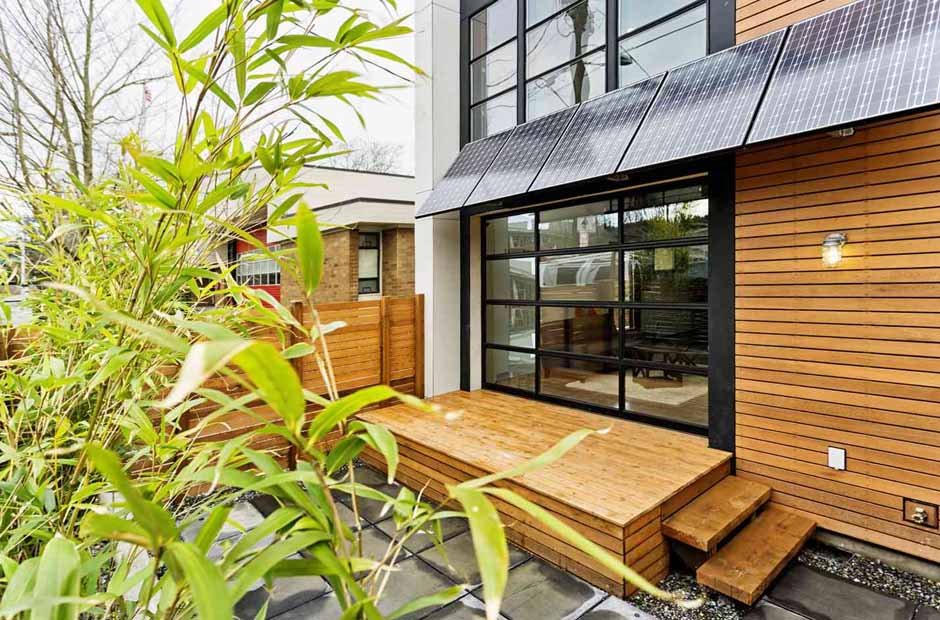In the realm of sustainable architecture and construction, aluminum has emerged as a transformative material, offering a blend of structural versatility, energy efficiency, and recyclability that aligns perfectly with the demands of eco-conscious design. As the world seeks innovative ways to reduce its environmental impact, the integration of aluminum into building processes is not just a trend, but a substantial step towards a greener future.
Table of Contents
The Green Appeal of Aluminum
Aluminum’s ecological advantages stem from its unique properties and life cycle. To begin with, aluminum is exceptionally lightweight, making it an ideal choice for structures that require reduced dead loads, such as façades and roofing. This attribute not only simplifies construction but also contributes to lower transportation costs and energy consumption during installation.
Moreover, aluminum exhibits impressive resistance to corrosion, enhancing its durability and lifespan. This longevity translates into decreased maintenance requirements and a reduced need for replacement materials, ultimately lessening the overall environmental impact of a building over time.
Energy Efficiency Through Thermal Performance
One of aluminum’s standout qualities in sustainable construction lies in its thermal conductivity. Aluminum efficiently transfers heat, allowing it to respond rapidly to temperature fluctuations. This property enables the material to be employed in energy-efficient building designs, enhancing both insulation and ventilation systems. In warmer climates, aluminum’s ability to dissipate heat quickly aids in maintaining comfortable indoor temperatures, reducing reliance on energy-intensive air conditioning.
The integration of aluminum in fenestration – windows, doors, aluminum pipes, and curtain walls – is particularly noteworthy. By combining aluminum framing with advanced glazing technologies, architects can design structures that maximize natural light while minimizing heat transfer. This not only reduces artificial lighting needs but also lessens the load on HVAC systems, thereby curbing energy consumption.
Recyclability and Reduced Environmental Footprint
One of aluminum’s most compelling features is its recyclability. Unlike many construction materials that end up in landfills after their service life, aluminum can be infinitely recycled without losing its inherent properties. This closed-loop recycling process consumes just a fraction of the energy needed to produce primary aluminum from bauxite ore, leading to significant reductions in greenhouse gas emissions.
The integration of recycled aluminum into new building projects further reduces the demand for virgin materials. This shift towards a circular economy not only conserves natural resources but also minimizes energy consumption, illustrating aluminum’s integral role in sustainable building practices.
Challenges and Considerations
While aluminum’s potential in sustainable construction is undeniable, a few challenges must be addressed. The energy-intensive process of smelting aluminum from raw materials is a concern, highlighting the importance of using recycled content whenever feasible. Additionally, the environmental impact of mining bauxite, the primary ore for aluminum, requires responsible extraction practices to mitigate ecological damage.
Furthermore, architects and builders must consider the overall lifecycle impact of aluminum components, including coatings and finishes that could affect recyclability. Thoughtful design choices are essential to ensure that aluminum’s positive attributes are maximized while minimizing any potential downsides.
A Bright Future for Aluminum in Green Building
As the global community intensifies efforts to combat climate change, the significance of sustainable building practices becomes increasingly evident. Aluminum’s role in this endeavor is not just a novelty – it’s a testament to how innovation within the construction industry can align with environmental stewardship.
The adaptability, energy efficiency, and recyclability of aluminum make it an invaluable asset for architects and builders seeking to construct environmentally responsible structures. Its incorporation into fenestration, roofing, façades, and structural elements showcases its versatility, while its ability to contribute to energy savings and reduced greenhouse gas emissions underscores its relevance in the sustainable building movement.
In conclusion, aluminum’s journey from industrial applications to a key player in sustainable building materials underscores its transformative potential. Through its lightweight yet durable nature, thermal efficiency, recyclability, and energy-saving attributes, aluminum paves the way for a greener, more sustainable future in architecture and construction. By embracing aluminum as a cornerstone material, we can create structures that harmonize with the environment, inspire innovation, and stand as beacons of sustainable progress.










